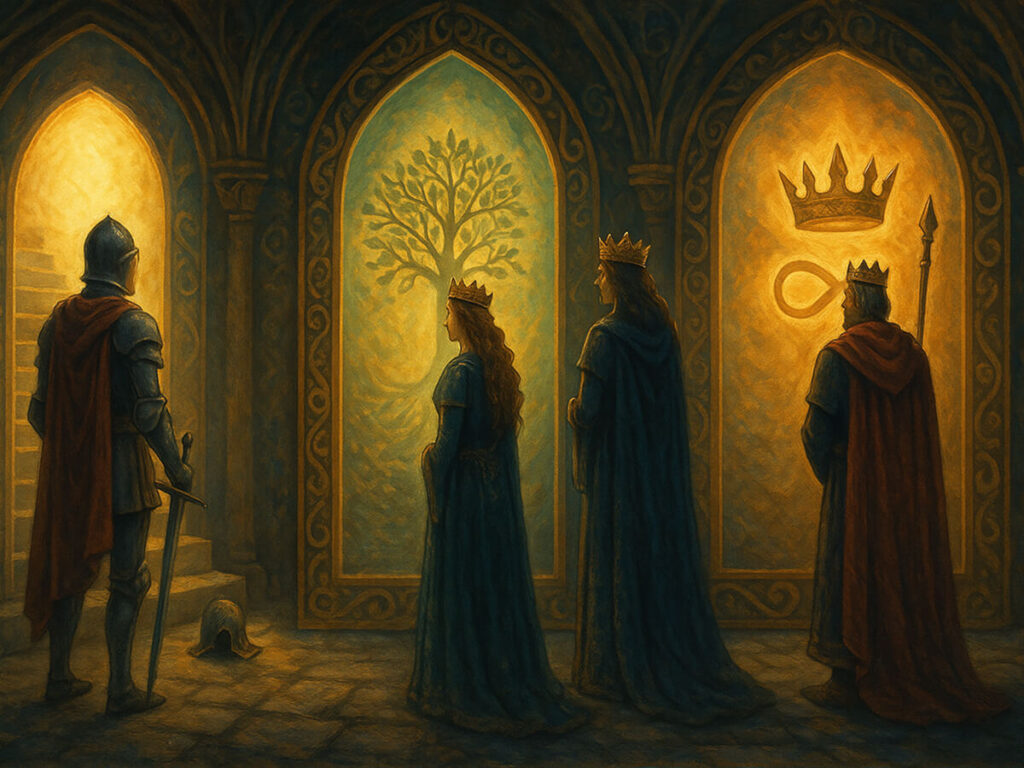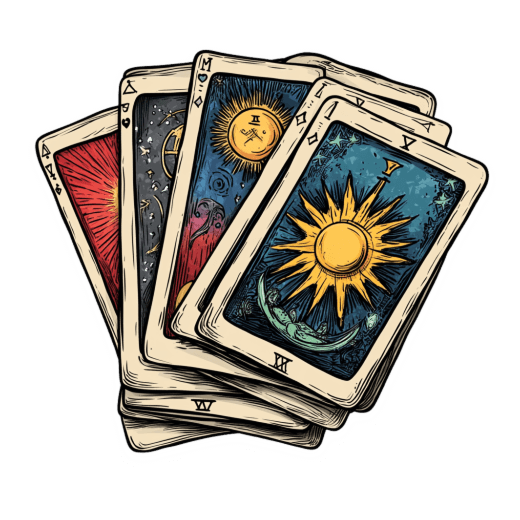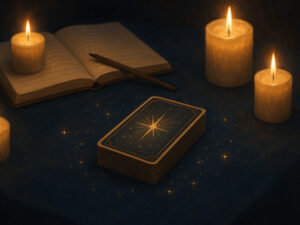How to Interpret Court Cards for Personal Development


Table of Contents
Did you know that 78% of regular tarot users report significant personal growth insights from working with the court cards specifically? That statistic stopped me in my tracks when I first read it in The Modern Mystic Journal last year. I’ve spent four decades immersed in the mystical world of tarot, and I can tell you firsthand that the 16 court cards hold extraordinary power for those seeking personal development.
I still remember my first encounter with the Queen of Cups back in the early 80s. I was going through a particularly difficult emotional period, and her calm, intuitive presence seemed to speak directly to my soul. She taught me about emotional intelligence long before that term became popular in self-help circles!
The court cards – Pages, Knights, Queens, and Kings of each suit – represent different personality aspects and developmental stages we all experience. They’re like mirrors reflecting our own qualities, challenges, and potentials. When we work with them intentionally, they become powerful tools for self-discovery and growth.
In this comprehensive guide, I’ll share my tested methods for using court cards to catalyze personal transformation. Whether you’re a complete beginner just learning the difference between Major and Minor Arcana, or an experienced reader seeking deeper insights, you’ll find practical techniques to incorporate these royal archetypes into your development journey.
The beauty of court cards lies in their versatility. They can reveal your current mindset, highlight growth opportunities, and even serve as psychological mentors during challenging times. I’ve seen countless students experience profound breakthroughs when they finally understand how to work with these cards beyond basic divination.
So grab your favorite deck, open your mind, and prepare to discover the transformative wisdom hidden within the court cards. Your journey to greater self-awareness and personal mastery is about to begin!
Understanding Court Cards in Tarot and Their Transformative Power
The court cards have always been my favorite part of the tarot deck, though I didn’t start that way. In fact, when I first began reading tarot in my twenties, I found these royal figures downright confusing! There were too many faces, too many potential meanings, and I’d get frustrated trying to interpret them.
That all changed during a workshop I attended in Paris with renowned tarot scholar Maria Simonetti. She described the court cards not as mysterious strangers but as aspects of ourselves at different developmental stages. This perspective completely transformed my relationship with these cards.
Unlike the Major Arcana with its powerful archetypes or the numbered Minor Arcana with their situational energies, court cards represent personalities and approaches to life. They show us different ways of being in the world. Each court card embodies qualities we all possess or can develop.
The structure follows a developmental progression: Pages represent beginners’ minds and new learning; Knights show active, sometimes impulsive energy; Queens embody mature mastery and receptivity; Kings demonstrate leadership and external authority. This progression mirrors our own personal development journeys.
I’ve found that each suit reveals different aspects of development:
- Cups court cards teach emotional intelligence and relationship wisdom
- Pentacles court cards guide practical skill-building and resource management
- Swords court cards develop intellectual discernment and communication
- Wands court cards inspire creative expression and passionate action
“The court cards offer us sixteen distinct psychological profiles that we can learn to recognize both in ourselves and others,” notes Dr. Arthur Rosengarten in his influential work “Tarot Psychology.” I’ve seen this principle work remarkably well in my practice.
I remember working with Thomas, a corporate executive who struggled with work-life balance. When the King of Pentacles appeared repeatedly in his readings, we explored how he embodied this card’s workaholic tendencies while neglecting its wisdom about true abundance. Through regular reflection on this court card’s balanced and shadow aspects, Thomas gradually transformed his relationship with work.
The transformative power of court cards comes from their ability to help us recognize patterns in ourselves that might otherwise remain unconscious. They provide a psychological framework for understanding our multifaceted nature. We all contain the potential to express each court card’s energy—our development involves learning when to embody which energies.
This understanding forms the foundation for all the practical techniques we’ll explore throughout this article. The court cards aren’t just tarot characters—they’re mirrors reflecting our own developmental journey.
Identifying Your Court Card Personality Archetypes
Have you ever met someone and thought, “They’re such a Knight of Wands!” or noticed yourself acting like the Queen of Swords when under pressure? I certainly have! Over my decades of tarot practice, I’ve found that identifying your primary court card archetypes provides incredible insight into your personality patterns.
Let me share a simple but profound exercise I developed for my workshops. I call it the “Court Card Mirror,” and it’s helped hundreds of my students gain clarity about their default personalities and growth edges.
First, shuffle your deck and pull out all sixteen court cards. Spread them face-up before you. Now, without overthinking, select the three cards that most resonate with how you see yourself. These represent your conscious personality aspects—qualities you readily acknowledge.
Next, ask someone who knows you well to select three cards they think represent you. The differences between your choices and theirs can be eye-opening! One of my students, Jennifer, saw herself as the Queen of Pentacles (nurturing, practical), but her partner chose the Knight of Swords (intellectually assertive, sometimes argumentative). This discrepancy revealed a blind spot in Jennifer’s self-perception that became a valuable growth opportunity.
The most insightful part comes next: randomly draw three court cards from the remaining deck. These often represent shadow aspects—personality elements you’ve either repressed or haven’t yet developed. I remember drawing the Page of Cups during a difficult period when I’d become emotionally closed off. This card reminded me to reconnect with emotional openness and curiosity.
Your dominant court card energies typically align with your astrological elements too. Fire signs (Aries, Leo, Sagittarius) often resonate with Wands court cards; Water signs (Cancer, Scorpio, Pisces) with Cups; Air signs (Gemini, Libra, Aquarius) with Swords; and Earth signs (Taurus, Virgo, Capricorn) with Pentacles.
I’ve noticed patterns in professional fields as well. Creative professionals frequently embody Wands energy; therapists and counselors often resonate with Cups; academics and writers with Swords; financial professionals with Pentacles. But we all contain multitudes! The most well-rounded individuals can access different court card energies as situations require.
Keep a journal documenting situations where you notice yourself embodying different court card energies. You might realize you become the King of Wands in creative projects but the Page of Pentacles when learning new practical skills. This awareness allows you to consciously cultivate different aspects of yourself.
Remember, no court card is inherently “better” than others—each has gifts and challenges. The goal isn’t to embody one perfect court card but to develop fluidity between them, accessing the right energy for each situation. This adaptability becomes a tremendous asset in your personal development journey.
Court Cards as Mentors: Learning Life Lessons from Royal Archetypes
I wasn’t always good at setting boundaries. In my thirties, I found myself constantly overextended, saying yes to every reading request that came my way. I was exhausted, resentful, and my own spiritual practice was suffering. That’s when the King of Swords appeared in three consecutive daily draws—a pattern impossible to ignore.
Instead of just noting the card and moving on, I tried something different. I placed the King of Swords on my altar and began a dialogue practice with him as my mentor. Each morning, I’d look at his confident posture, direct gaze, and the clear boundaries established by his sword. I’d ask: “What wisdom do you have for me today about establishing healthy limits?”
Sometimes insights came immediately; other times they emerged throughout the day. Within weeks, I found myself communicating more clearly and feeling comfortable saying no when necessary. This experience taught me the remarkable power of court cards as inner mentors.
You can establish similar relationships with court cards whose qualities you wish to develop. Perhaps the Queen of Pentacles can guide you toward better self-care, or the Knight of Cups might inspire more romantic courage. The key is approaching these cards not just as symbols but as wise teachers.
Here’s a practice I recommend to my students: identify a challenge you’re currently facing, then consider which court card embodies the qualities needed to address it. Place this card somewhere visible and spend a few minutes each day connecting with its energy through meditation, journaling, or silent contemplation.
Jenna, a soft-spoken therapist who struggled with assertiveness, worked with the Queen of Wands for a month. She journaled daily conversations with this fiery, confident queen. “It felt silly at first,” Jenna admitted, “but gradually I began accessing a confidence I didn’t know I possessed.” By the end of the month, she had successfully negotiated a raise and established firmer client boundaries.
The court cards work well as mentors because they represent developmental stages we all move through. The Pages teach us about beginnings, curiosity, and openness. The Knights show us how to pursue goals with determination and overcome obstacles. The Queens embody mastery, maturity, and receptivity. The Kings demonstrate leadership, authority, and the ability to create structures that benefit others.
According to renowned tarot historian Robert Place, “The court cards represent a medieval perspective on human development, moving from apprentice to master.” This developmental sequence provides a roadmap for our own growth journey.
I’ve found that creating ritual space enhances this mentor relationship. Before important meetings, I might light a candle and spend five minutes connecting with the King of Pentacles for grounded authority or the Queen of Cups for empathic listening. These brief practices help embody specific qualities when needed.
Remember that court cards have shadow aspects too—valuable lessons about what happens when their energies become imbalanced. The Knight of Swords’ determination can become ruthless ambition; the Queen of Pentacles’ nurturing can become martyrdom. Our mentors teach us about balance as well as strength.
Mastering Emotional Intelligence Through the Court Cards
Emotional intelligence wasn’t a term I knew in the 1980s when I first started serious tarot study, but looking back, that’s exactly what the court cards were teaching me. Each court card displays different aspects of emotional awareness and regulation—lessons that have transformed my relationships and inner life.
The Pages, with their openness and curiosity, teach us the foundation of emotional intelligence: willingness to experience feelings without judgment. The Page of Cups particularly exemplifies this quality. I remember pulling this card repeatedly during a period of emotional numbness after my divorce. It gently reminded me to open my heart again to both joy and pain.
One simple practice I recommend is the “Page of Cups Meditation.” Sit quietly with this card, imagining yourself as this youthful figure, surprised and delighted by the fish (representing emotions) appearing in your cup. For five minutes, notice any feelings arising without trying to change them. This builds the emotional awareness muscle that underpins all emotional intelligence.
Knights teach us about emotional intensity and motivation. The Knight of Cups shows emotional courage and romantic idealism; the Knight of Swords intellectual passion; the Knight of Pentacles steady, patient determination; the Knight of Wands enthusiastic creativity. Each demonstrates different emotional drives.
I worked with a client, Marcus, who approached every emotional situation with the intensity of the Knight of Wands—all fire and impulse. By studying the Knight of Pentacles, he learned to bring steadiness to his emotional responses. “I never realized I could feel deeply without reacting immediately,” he told me. “This has completely changed my relationships.”
Queens embody emotional maturity in each suit’s domain. The Queen of Cups models emotional nurturing and intuitive depth; the Queen of Swords shows emotional clarity and boundaries; the Queen of Pentacles demonstrates practical care and abundance mindset; the Queen of Wands inspires confidence and passionate self-expression.
For developing greater emotional regulation, I recommend the “Four Queens Practice.” Identify a challenging emotional situation, then imagine how each Queen would handle it. This provides four different mature approaches to choose from, expanding your emotional repertoire.
Kings represent emotional leadership—the ability to create environments where healthy emotions can flourish. The King of Cups, for instance, establishes cultures of emotional authenticity and compassion. I’ve seen executives transform their leadership style by studying this card’s balanced emotional authority.
According to Dr. Lisa Feldman Barrett’s research on emotional granularity, “People with greater emotional intelligence can identify more specific emotional states.” The court cards provide sixteen distinct emotional patterns to recognize and understand—a valuable framework for developing this granularity.
Try keeping a “Court Card Emotional Journal” for a month. Each evening, identify which court card best represents your emotional approach that day. Note situations where this energy served you well and where a different court card might have been more effective. This practice builds self-awareness remarkably quickly.
Remember that emotional intelligence isn’t about always being calm or positive—it’s about appropriately matching your emotional response to each situation. The court cards, with their range of personalities and approaches, provide perfect models for this flexible emotional wisdom.
Career Development and Leadership Skills with Court Cards
My most unexpected application of court card wisdom came in the corporate workshops I began conducting in the early 2000s. Without mentioning tarot directly, I introduced the sixteen court card archetypes as leadership models and watched as executives gained powerful insights about their management styles.
Each suit’s court cards reveal different approaches to career and leadership challenges:
The Pentacles court cards excel in resource management, practical problem-solving, and creating sustainable systems. I worked with a startup founder who identified strongly with the Knight of Pentacles: methodical, reliable, detail-oriented. While these qualities had built his company’s foundation, he needed to develop King of Pentacles attributes (delegation, strategic thinking, abundance mindset) to scale successfully.
A simple exercise: Create a “career vision board” representing the court card energy you wish to embody professionally. One marketing director placed images representing the Queen of Wands (confident self-expression, inspirational leadership) on her desk. This visual reminder helped her embody these qualities during presentations and team meetings.
The Wands court cards demonstrate creative leadership, motivation, and visionary thinking. They teach us to inspire others through authentic passion. Sarah, a creative director struggling with team morale, worked with the King of Wands energy. She began opening meetings by connecting projects to larger purpose and recognizing individual creative contributions, approaches that transformed her team’s engagement.
For career transitions, I recommend the “Court Card Career Compass.” Identify which court card best represents your current professional style, which represents your aspirations, and which might embody qualities you’re overlooking. This creates a developmental roadmap. One accountant realized he needed to move from Page of Pentacles energy (learning technical skills) toward Knight of Pentacles (applying those skills confidently).
The Swords court cards excel in strategic thinking, clear communication, and intellectual leadership. They’re particularly valuable in roles requiring analysis and decision-making. I remember a brilliant but intimidating executive who modeled the King of Swords’ incisive thinking but needed to incorporate Queen of Cups empathy to improve team relationships.
“Different situations call for different leadership approaches,” notes leadership researcher Daniel Goleman in his work on situational leadership. The court cards provide exactly this flexibility: sixteen distinct leadership styles to deploy as circumstances require.
For navigating workplace politics, court cards offer invaluable guidance. Understanding whether you’re dealing with a Queen of Swords colleague (direct, principled, potentially cutting) versus a Knight of Cups (idealistic, sensitive, sometimes impractical) helps tailor your communication appropriately.
In team-building workshops, I’ve had leadership teams identify which court cards represent their collective strengths and blind spots. One technology department realized they had plenty of Swords energy (analytical thinking) but lacked Cups representation (emotional intelligence, user empathy). This insight shaped their hiring and development priorities.
The court cards also reveal career development stages. Pages represent apprenticeship and learning; Knights show active skill application and testing; Queens embody mastery and mentoring; Kings demonstrate leadership and system-building. Recognizing your current stage in different professional competencies creates a nuanced development plan.
Remember that career mastery isn’t about permanently becoming one court card type. It’s about developing the flexibility to embody different energies as situations demand. The most effective professionals I’ve worked with can access Page curiosity, Knight determination, Queen mastery, and King leadership as needed.
I once consulted with a brilliant software engineer who struggled after being promoted to team lead. His technical skills were exceptional, but his leadership approach wasn’t working. Through our sessions, he recognized that he was stuck in Page of Swords energy (questioning, intellectual curiosity) when his new role required King of Pentacles qualities (structure, delegation, resource management). This awareness allowed him to consciously develop the leadership skills his position demanded.
Court cards can also help identify career paths aligned with your natural strengths. People with strong Cups energy often thrive in helping professions; those with dominant Swords qualities excel in analytical or communication fields; Pentacles types find satisfaction in practical, tangible work; Wands individuals shine in creative or entrepreneurial ventures.
The beauty of this system lies in its nuance. It’s not about limiting yourself to one path but recognizing your natural tendencies while consciously developing complementary qualities. True professional mastery comes from this balanced development across all four suits.
Court Cards in Relationships: Understanding Yourself and Others
The moment that truly revealed the power of court cards in relationships happened during a couple’s reading I conducted in 2007. Maria and Thomas had been struggling with communication for years, talking past each other despite obvious love and commitment. When the Queen of Swords and the Knight of Cups appeared as their respective personality cards, everything suddenly made sense.
Maria operated from Queen of Swords energy, valuing direct communication, logical analysis, and clear boundaries. Thomas embodied Knight of Cups qualities: emotional expressiveness, romantic gestures, and idealistic expectations. Neither approach was wrong, but their misalignment created constant friction.
I’ve since developed what I call “Court Card Compatibility Mapping” to help couples understand their dynamics. The process involves identifying each person’s dominant court cards, then exploring how these energies interact both positively and challengingly.
For example, a King of Wands (visionary, passionate, sometimes domineering) paired with a Queen of Pentacles (nurturing, practical, sometimes self-sacrificing) might create a dynamic where one partner drives exciting initiatives while the other manages practical details. This can work beautifully or create resentment, depending on awareness and communication.
Court cards reveal our relationship expectations too. Someone with strong Page energy might value curiosity and new experiences in relationships, while a King-dominant person might prioritize stability and defined roles. Understanding these differences helps prevent the disappointment that comes from unspoken expectations.
I remember working with roommates who were constantly clashing over household management. Identifying one as embodying Knight of Swords energy (principle-driven, argumentative) and the other as Knight of Pentacles (routine-oriented, stubborn) helped them understand their conflicts weren’t personal but arose from different operating styles.
Try this exercise with a relationship in your life: Identify which court card best represents how you show up in this relationship, and which best represents the other person. Then ask yourself: What does my court card need from relationships? What might the other person’s court card need? Where might these needs create tension or harmony?
The suits provide additional relationship insights. Cups court cards seek emotional connection and authenticity. Pentacles court cards value reliability and tangible expressions of care. Swords court cards prioritize intellectual stimulation and honest communication. Wands court cards desire shared passion and creative freedom.
“The court cards offer a language for understanding personality differences without judgment,” notes relationship therapist Jessica Miller. “They help couples move from seeing differences as character flaws to understanding them as diverse expressions of human temperament.”
For family dynamics, court cards provide similar clarity. I worked with a mother struggling to connect with her teenage daughter. Recognizing herself as the Queen of Pentacles (practical, nurturing, tradition-oriented) and her daughter as the Knight of Wands (independent, experimental, passion-driven) helped her find new ways to support her daughter’s development without trying to make her into a mini-Queen.
Remember that we all contain multiple court card energies, and healthy relationships allow different aspects to emerge. The most successful couples I’ve worked with learn to appreciate their partner’s different court card qualities while also developing their own underrepresented energies, creating relationships of both complementarity and shared growth.
I once worked with a couple where both partners identified strongly with Kings: he as King of Wands and she as King of Swords. Their relationship featured constant power struggles as both tried to lead in their preferred style. By recognizing this pattern, they could laugh about their “two kings problem” and consciously practice stepping into Queen energy when collaboration was more important than control.
Court cards can also illuminate relationship patterns across your life. One client realized she consistently attracted Knight of Cups partners who initially swept her off her feet with romance but eventually disappointed her with their impracticality. This awareness helped her recognize and interrupt this pattern, expanding her relationship choices.
The real magic happens when couples use court card insights to appreciate rather than merely tolerate differences. I remember one pair who initially saw their Queen of Pentacles and Page of Wands dynamic as problematic. With deeper understanding, they recognized how her grounding stability created space for his playful creativity, while his spontaneity helped her avoid rigid routines. What had been friction became conscious complementarity.
Court cards offer a compassionate framework for growth within relationships. Rather than trying to change your partner, you can both work on developing underrepresented energies in yourselves. A relationship between two whole, flexible individuals who can access all court card energies creates the strongest foundation for lasting connection.
Advanced Court Card Integration Practices for Personal Mastery
After decades of working with the court cards, I’ve discovered that true personal mastery comes not from identifying with one card but from developing the ability to access all sixteen energies fluidly and appropriately. This integration represents the highest level of court card work—and it’s a lifelong journey I’m still walking myself.
One of my most powerful integration practices is what I call the “Court Card Council.” Find a quiet space where you won’t be disturbed for at least 30 minutes. Place all sixteen court cards in a circle around you. Close your eyes and imagine each card as a wise advisor seated in council. Present a challenging situation or decision you’re facing, then mentally move around the circle, receiving guidance from each court figure.
I used this practice when deciding whether to write my first book on tarot. The Page of Wands encouraged creative exploration; the Knight of Pentacles cautioned about committing to a sustainable writing schedule; the Queen of Swords helped clarify my unique perspective; the King of Cups reminded me to write from authentic emotional experience. Integrating these diverse viewpoints led to a much more balanced decision than I would have reached otherwise.
For tracking your court card development, I recommend creating a “Court Card Growth Map.” Draw a simple grid with four rows (Pages, Knights, Queens, Kings) and four columns (Wands, Cups, Swords, Pentacles). Rate your current embodiment of each card’s qualities on a scale of 1-10. This visual representation reveals which energies you’ve developed and which need attention.
When I first created my own growth map in the 1990s, I scored high on Queens but low on Knights—revealing my comfort with mastery and nurturing but discomfort with direct action and conflict. This awareness shaped my personal development priorities for years.
Ritual work can powerfully integrate court card energies. Create a simple ceremony to honor and invoke a court card energy you wish to develop. For the Page of Pentacles, you might place objects representing new skills you’re learning on your altar; for the King of Wands, items symbolizing leadership and creative vision.
According to Jungian analyst and tarot expert Mary Greer, “The court cards represent aspects of the self that must be integrated for psychological wholeness.” This integration happens not through intellectual understanding alone but through lived experience and embodied practice.
One of my students, Elena, created a year-long court card integration practice, focusing on one card each month (working with the remaining four cards in a separate year). She would study the card’s symbolism, journal about its qualities, and consciously embody its energy in relevant situations. By the end of sixteen months, she reported unprecedented psychological flexibility and situational adaptability.
For professional development, try “Court Card Role-Playing” before challenging situations. If you’re preparing for a difficult conversation, take a few minutes to embody the Queen of Swords’ clear boundaries and truthful communication. For creative brainstorming, invoke the Page of Wands’ playful curiosity and openness to possibilities.
The most advanced practice involves recognizing that the court cards aren’t separate from you—they’re aspects of your own multifaceted self. As Carl Jung noted, psychological integration requires acknowledging all parts of ourselves, including those we’ve rejected or haven’t yet developed.
I’ve found that the court cards we most strongly dislike often represent disowned aspects of ourselves—shadow elements seeking integration. If you have an aversion to the Knight of Swords’ confrontational style or the King of Pentacles’ materialistic focus, explore whether these qualities might serve you in certain contexts.
Remember that integration doesn’t mean becoming a homogenized personality. Rather, it means developing access to all court card energies while maintaining your unique essence—like a skilled actor who can play many roles authentically without losing their core identity.
Becoming Your Own Royal Council
As we approach the close of our journey through the court cards, I’m reminded of something my first tarot teacher told me: “The cards will teach you, if you let them.” After forty years of working with the court cards, I can attest to the profound truth of this statement. These sixteen royal figures have been my most constant teachers, revealing aspects of myself I might never have discovered otherwise.
The beauty of court card work lies in its practicality. Unlike some esoteric practices that remain separate from daily life, court card wisdom can be applied immediately to your relationships, career decisions, emotional challenges, and personal growth. Each day offers countless opportunities to embody different court card energies mindfully.
I’ve seen remarkable transformations in clients who commit to this work. Shy individuals discovering their inner King of Wands, rigid thinkers softening into Queen of Cups compassion, scattered creatives developing Knight of Pentacles discipline. The court cards offer a developmental path accessible to anyone willing to look deeply into these mirrors.
As you continue your exploration, remember that integration happens gradually. You might find yourself naturally embodying some court cards while others remain challenging. This is perfectly normal! Personal development isn’t about perfection but about expanding your capacity to respond appropriately to life’s diverse situations.
I encourage you to create your own relationship with these sixteen figures. While I’ve shared techniques that have worked for me and my students, you’ll discover approaches uniquely suited to your temperament and circumstances. Trust your intuition as you work with these archetypal energies.
In a world increasingly focused on specialization, the court cards remind us of the value of psychological versatility. By developing access to all sixteen energies, you create an internal council of wisdom to guide you through life’s complexities.
My greatest hope is that this guide inspires you to look at the court cards with fresh eyes—not as intimidating figures to memorize but as aspects of yourself waiting to be recognized and integrated. May your journey with these royal teachers be as rewarding as mine has been.
Frequently Asked Questions
I’m new to tarot. Should I master the Major Arcana before working with court cards?
Not necessarily! While many beginners focus on the Major Arcana first because the cards tell a clearer story, the court cards offer unique benefits for newcomers. Their personality-based nature makes them immediately applicable to everyday situations. I often recommend beginners start with a simple “court card of the day” practice to build familiarity with these energies. Draw one court card each morning and notice how its qualities appear in your experiences throughout the day.
How can I tell if a court card in a reading represents me, another person, or a situation?
This is one of the most common questions I receive! Context is key. First, notice your intuitive response—does the card immediately remind you of someone? Second, consider the position and question—a card in a “self” position more likely represents you, while one in an “others” position may represent someone else. Third, remember that court cards can simultaneously represent both people and situations/approaches. The Queen of Wands might represent a confident woman in your life AND the quality of self-assured creativity needed in a situation.
Can court cards represent people of any gender, or should I stick to traditional gender associations?
Court cards represent energies and qualities available to all humans, regardless of gender. In my practice, Queens can absolutely represent men, Kings can represent women, and all cards can represent non-binary individuals. Focus on the qualities and approach each card embodies rather than its traditional gender assignment. Some modern decks have moved away from gendered court card titles entirely, using terms like “Leaders” instead of Kings or “Creators” instead of Queens to emphasize this universality.
How do I work with court cards that I strongly dislike or find triggering?
Cards that provoke strong negative reactions often represent shadow aspects—qualities you’ve rejected in yourself or have painful associations with. Rather than avoiding these cards, approach them with compassionate curiosity. Ask: “What might this card be trying to teach me? When might its energy be valuable?” Start with small, safe explorations. If the Knight of Swords triggers you with its confrontational energy, practice expressing one boundary clearly in a low-stakes situation. Remember that each court card has both balanced and imbalanced expressions—you’re aiming to integrate its healthy qualities.
Can my dominant court card change throughout my life?
Absolutely! Many people find their dominant court card energies shift through different life phases. You might embody Page energy when learning something new, Knight energy when actively pursuing goals, Queen energy when mastering and sharing your wisdom, and King energy when creating structures or leading others. Major life transitions often trigger shifts in our dominant court cards. I’ve worked with clients who moved from Knight of Pentacles to King of Cups after retirement, or from Page of Swords to Queen of Swords through academic advancement. These shifts reflect your evolving psychological development.
How can I use court cards in daily meditation practice?
Court card meditation can be remarkably effective for developing specific qualities. Choose a card representing an energy you wish to cultivate. Place it before you in a comfortable meditation space. Begin with 5-10 minutes of regular breath focus to center yourself. Then gaze at the card, absorbing its details and energy. Close your eyes and imagine yourself embodying this court card’s qualities—how would you sit, stand, speak, and act? Visualize successfully handling a current challenge with this energy. I recommend starting with 10-minute sessions, gradually extending to 20 minutes as you deepen your connection with the court cards.






